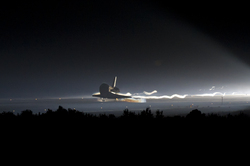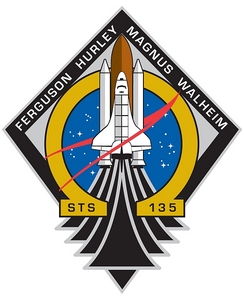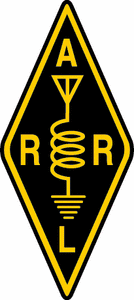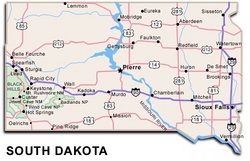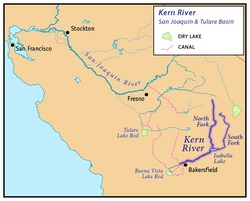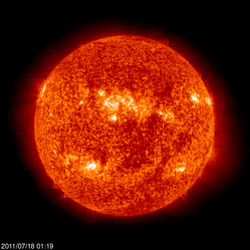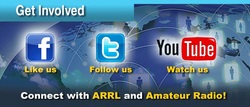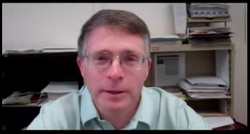 July 21, 2011 John E. Ross, KD8IDJ, Editor
| ||||||||||||||
+ Available on ARRL Audio News + ARRL Board of Directors Holds 2011 Second Meeting
The ARRL Board of Directors met July 15-16. Highlights of the meeting include:
A more detailed report of the meeting will be distributed when the minutes are released. If you would like to receive a copy of the minutes via e-mail, please go to "Edit your Profile" on the ARRL website, click on "Edit Email Subscriptions" and check the box labeled "ARRL Board meeting agendas and minutes." The minutes will also be available for download from the website in the coming days. + Amateur Radio in Space: NASA's Space Shuttle Program Comes to an End
As Atlantis once again touched the Earth in Florida on Thursday, July 21, an era came to an end. This era saw dreams realized when men and women could go into space on a craft -- the space shuttle -- that could be used again and again. NASA's space shuttle fleet has set dreams aflight since its first launch on April 12, 1981, starting with Columbia and continuing with Challenger, Discovery, Atlantis and Endeavour. These crafts have carried people into orbit repeatedly, launched, recovered and repaired satellites, conducted cutting-edge research and transported materials to help build the largest structure in space, the International Space Station.
Barely 30 months after Columbia first lifted to the skies, radio amateurs around the world were excited about another first: a ham in space. It was 1983 -- the third year of the space shuttle program -- and Mission Specialist Owen Garriott, W5LFL, was on board Columbia for mission STS-9. NASA had given Garriott permission to attempt radio contact with Amateur Radio operators on Earth during his free time. Read more here. + Public Service: ARRL Soliciting Stations to Become Emergency Liaison Stations
During the 2008 hurricane season, ARRL Headquarters instituted a Command-Control-Coordination (C3) operation to support operations taking place in the affected ARRL Sections. One requirement was the need for Headquarters to establish radio links into the affected areas. In the summer -- the height of hurricane season -- 75 meters is noisy and doesn't propagate well during the day and hindered W1AW's reach into these areas. As such, the nets on 40, 75 and 80 meters -- while providing excellent coverage of several hundred miles in the impacted areas -- did not allow W1AW to monitor these frequencies, nor did it permit monitoring of developing conditions that would allow Headquarters staff to maintain a higher level of situational awareness and disaster intelligence necessary for support operations. ARRL West Gulf Division Director David Woolweaver, K5RAV, offered his EchoLink system to ARRL during the 2008 hurricane season. Woolweaver -- who had good propagation into the impacted areas during the tropical events in the Gulf of Mexico area -- established a connection between his home HF equipment and EchoLink. By connecting in to this, W1AW was able to use a direct EchoLink connection to Woolweaver's home station, enabling W1AW to come up on these HF frequencies. With EchoLink, the ARRL was to maintain contact between the affected areas and with the National Hurricane Center and VoIP Hurricane Net operations. The need to build out the capability to link HF stations to EchoLink was clear and Woolweaver began to enlist other stations in Texas to develop it. But according to ARRL Emergency Preparedness Manager Mike Corey, W5MPC, it has been an ad hoc effort with known stations with no official standing for emergency communications with the ARRL. Additionally, while a regional capability was developed in a part of Texas, the ARRL needed to have this capability throughout the rest of the country. The concept of the Emergency Radio Internet Linking System (ERILS) was crafted to meet this need, with ERILS stations operating under the ARRL Emergency Preparedness Program. Stations would be designated Official ERILS Stations after meeting specific criteria that would enable them to blend the capabilities of radio and the Internet, permitting emergency communications and a W1AW presence to occur. Stations would be geographically diverse, providing redundant pathways into multiple areas of the United States. While EchoLink was used successfully in 2008, other current and future software platforms could be used with traditional RF capabilities to meet the mission needs. "Individual stations are the key component of ERILS," Corey explained. "These stations require a particular designation for planning and response purposes, and as recognition of the station owner's resources and commitment. These stations are designated as an Emergency Liaison Station. An ELS is not an Official Emergency Station (OES) that is part of the ARES® program, but is a separate resource available to the Emergency Preparedness Manager, or designees, and the ARRL Leadership." To find out more, including information on your station can be part of the ELS program, click here. + One Ham Killed, Another Seriously Injured in Tower Accident
As a group of South Dakota hams were dismantling a 110 foot tower outside of Hot Springs on Saturday, July 16, a gust of wind toppled the final section, trapping two local hams underneath. Tim Anderson, K0OR, 54, and Tom Embree, NC0K, were transported to Rapid City Regional Hospital via helicopter, where Anderson died of his injuries. Embree underwent surgery on Sunday and Wednesday; he remains in serious condition. Both are members of the Hot Springs Amateur Radio Club; Anderson was the club's president. Hot Springs is located about 57 miles south of Rapid City. Read more here. + Newly Licensed Hams Help with Search for Missing California Man
After Derrick Rush -- a 28 year old state corrections officer from Arroyo Grande, California - disappeared on July 9, several state agencies and volunteers began searching for him. According to reports, Rush vanished when he fell off his inner tube in the Kern River about 50 miles northeast of Bakersfield. Clayton Cullen, KJ6PYC, and his son CJ Cullen, KJ6PYD, of Paso Robles, joined the search efforts on July 13. Three days later, CJ spotted Rush's lifeless body floating by in the river and used his handheld transceiver to report it. His father was able to secure the body farther down the river. Read more here. Solar Update
Tad "I want to be the one to walk in the Sun" Cook, K7RA, reports: The average daily sunspot numbers for the week rose nearly 27 points to 92.4, while average daily solar flux increased more than 9 points to 98.2. The latest prediction has solar flux values at 100 for July 21-23, 98 on July 24-28, 90 on July 29-August 2, 95 on August 3-7, 98 on August 8, and then back to 100 on August 9-16. The planetary A index for July 21-23 is predicted at 15, 12 and 8, then 5 on July 24-28, 8 on July 29-31, then 10, 8, 5 and 8 on August 1-4, 12 on August 5-7, and back to 8 on August 8-10. Look for more information -- including more about astrophysicist Douglas Biesecker's analysis and critique of predictions for a grand solar minima -- on the ARRL website on Friday, July 22. For more information concerning radio propagation, visit the ARRL Technical Information Service Propagation page. This week's "Tad Cookism" is brought to you by Cyndi Lauper's Girls Just Want to Have Fun. + Social Media: ARRL Launches Online Forums To assist League members in communicating with one another and with ARRL staff on topics of common interest, the ARRL has established three forums -- Contesting, Awards and Technology -- on the ARRL website. Visit www.arrl.org/forums to chat with fellow hams about these topics. Additional forums are planned once we have gained some experience with these three. ARRL members, guest users and others can view the threads, but in order to participate in the conversations or ask questions, you must be logged in as an ARRL member. All users should read the forum rules before participating. + Social Media: Connect with ARRL and Amateur Radio via Social Media
ARRL participates on many of the popular social networking sites to share news, photos, events and videos. Check out these sites for communities of ARRL members who share your interests in Amateur Radio. We'll share everything with you -- and you can share with us, too! Find Us on Facebook
Follow Us on Twitter
Watch Us on YouTube
Listen to Us on iTunes
This Week on the Radio
This week:
Next week:
All dates, unless otherwise stated, are UTC. See the ARRL Contest Branch page, the ARRL Contest Update and the WA7BNM Contest Calendar for more information. Looking for a Special Event station? Be sure to check out the ARRL Special Event Stations Web page. Upcoming ARRL Section, State and Division Conventions and Events
To find a convention or hamfest near you, click here. ARRL -- Your One-Stop Resource for Amateur Radio News and Information Join or Renew Today! ARRL membership includes QST, Amateur Radio's most popular and informative journal, delivered to your mailbox each month. Subscribe to NCJ -- the National Contest Journal. Published bi-monthly, features articles by top contesters, letters, hints, statistics, scores, NA Sprint and QSO Parties. Subscribe to QEX -- A Forum for Communications Experimenters. Published bi-monthly, features technical articles, construction projects, columns and other items of interest to radio amateurs and communications professionals. Free of charge to ARRL members: Subscribe to the ARES E-Letter (monthly public service and emergency communications news), the ARRL Contest Update (bi-weekly contest newsletter), Division and Section news alerts -- and much more! Find us on Facebook. Follow us on Twitter. ARRL offers a wide array of products to enhance your enjoyment of Amateur Radio Donate to the fund of your choice -- support programs not funded by member dues! Click here to advertise in this newsletter. | ||||||||||||||

